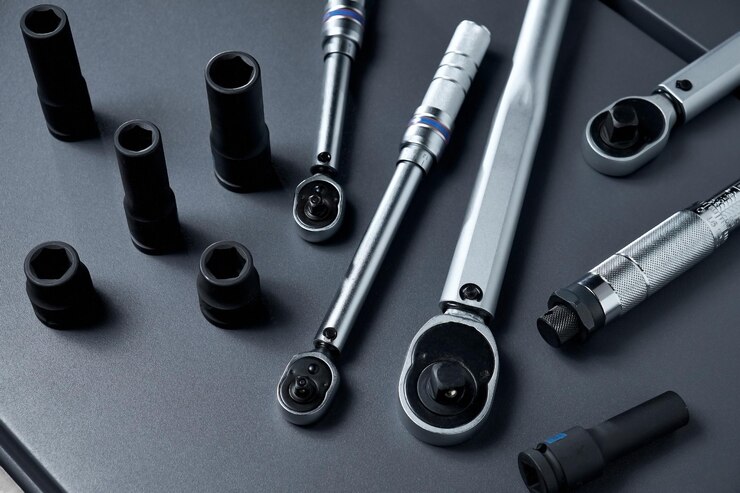In industries where precision is critical—such as aerospace, automotive, manufacturing, and construction—the accurate application of torque is essential. Torque wrenches are the go-to tools for applying a specific amount of force to fasteners like bolts and nuts. However, over time and with regular use, these tools can drift from their calibrated settings, resulting in under- or over-tightened bolts. That’s where torque wrench calibration service come into play, ensuring that each turn of the wrench delivers the exact force required.
What is Torque Wrench Calibration?
Torque wrench calibration is the process of verifying and adjusting the accuracy of a torque wrench to ensure it conforms to specified tolerances. It typically involves comparing the torque output of a wrench to a known, traceable standard using specialized equipment. If discrepancies are found, adjustments are made to bring the tool back within acceptable limits.
Calibration ensures that the wrench provides consistent and precise readings, reducing the risk of mechanical failure, safety hazards, and non-compliance with industry regulations.
Why Calibration is Important
- Precision and Accuracy: Over time, repeated use can cause the internal mechanisms of a torque wrench to wear out or shift, resulting in inaccurate torque output. Calibration ensures the tool continues to deliver accurate force as specified.
- Safety Assurance: In critical applications—such as automotive engine assembly or aircraft component installation—incorrect torque can lead to part failure, accidents, or even loss of life. Calibration ensures that bolts and fasteners are neither too tight nor too loose.
- Regulatory Compliance: Many industries must comply with strict ISO, ANSI, or ASME standards that mandate the regular calibration of torque tools. Proper calibration records demonstrate due diligence and regulatory compliance.
- Extended Tool Life: Regular calibration can identify minor issues before they become major failures. This preventative approach can prolong the lifespan of expensive torque wrenches.
- Quality Assurance: In manufacturing and assembly processes, consistent torque application ensures product quality, uniformity, and customer satisfaction.
How the Calibration Process Works
Torque wrench calibration typically follows these general steps:
- Inspection: The wrench is visually inspected for signs of wear, damage, or contamination. Any physical issues are addressed before calibration begins.
- Testing: The torque wrench is tested at multiple points (commonly 20%, 60%, and 100% of full-scale torque) using a calibrated torque measurement device, such as a torque transducer or loader.
- Comparison: The measured output is compared against the expected value. Deviations are noted and analyzed.
- Adjustment: If the wrench fails to meet tolerance requirements, it is adjusted or repaired to bring it back into compliance.
- Verification: After adjustment, the wrench is re-tested to confirm its accuracy.
- Certification: A calibration certificate is issued, detailing the test results, adjustments made, and traceability information. This certificate is crucial for audit and compliance purposes.
Types of Torque Wrenches That Require Calibration
- Click-Type Torque Wrenches: Common in automotive and maintenance applications.
- Electronic or Digital Torque Wrenches: Provide digital readouts and require both mechanical and electronic calibration.
- Beam-Type Torque Wrenches: Simpler design, but still require periodic verification.
- Hydraulic Torque Wrenches: Used in heavy industrial applications and require highly precise calibration due to the high torque outputs involved.
Each type may require a slightly different calibration procedure depending on its construction and intended application.
Calibration Frequency Guidelines
The frequency of torque wrench calibration depends on several factors, including:
- Manufacturer Recommendations
- Frequency of Use
- Environmental Conditions (e.g., temperature, humidity, dust)
- Industry Requirements or Regulations
As a general rule, torque wrenches should be calibrated at least once a year or every 5,000 cycles—whichever comes first. In high-risk or precision-critical industries, more frequent calibration (e.g., quarterly) may be necessary.
Choosing a Torque Wrench Calibration Service Provider
When selecting a service provider, consider the following:
- Accreditation: Choose a calibration lab accredited by a recognized body like ISO/IEC 17025 to ensure the highest standards of quality and traceability.
- Experience and Expertise: Providers with a track record in calibrating various torque tools across multiple industries are better equipped to handle complex or customized tools.
- Calibration Range: Make sure the lab can handle the torque range your tools require.
- Turnaround Time: Downtime can be costly. Opt for a provider that offers quick and reliable turnaround.
- On-site Calibration: Some providers offer mobile calibration services, bringing their equipment to your facility to minimize disruption.
- Detailed Certification: A good service should provide a comprehensive calibration certificate including test points, tolerances, measurement uncertainty, and traceability.
Digital Advancements in Calibration
As technology advances, torque wrench calibration is becoming more efficient and accurate. Digital calibration equipment, automated test rigs, and software-driven data logging systems help reduce human error and improve traceability.
Some providers now offer cloud-based calibration certificate management, allowing businesses to easily track tool histories, schedule recalibrations, and maintain audit-ready records.
Conclusion
Torque wrench calibration service are not just about compliance—they’re about ensuring safety, maintaining quality, and protecting your investment. Whether you’re assembling high-performance machinery or maintaining heavy equipment, accurate torque application is critical to success.
By partnering with a reputable calibration service provider and adhering to regular calibration schedules, you can be confident that your tools are performing with the precision your job demands. In the world of torque, accuracy isn’t optional—it’s essential.


